By Tommy Clarkson from the March 2016 Edition
Wandering Jew, Tradescantia zebrina or Zebrina pendula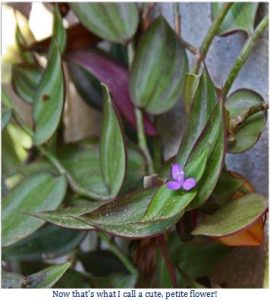
Family: Arecacea
(Also known as Purple Wandering Jew, Inch Plant, Cockroach Grass, Creeping Jenny)
This great plant – thought to be a Mexican native is quite versatile. They can be enjoyed in a hanging basket, window boxes, planted around the base of larger specimens, allowed to cascade down low walls or used as dramatic and efficient, erosion-controlling, groundcover.
(In fact, in that last consideration, I recently undertook a major and very fun landscaping project on an exceptionally steep hill dropping from high on a ridgeline with a spectacular bay vista to waves crashing on huge, craggy rocks far below. To tie several score plant varieties together and ensure we effectively thwarted erosion, several hundred of these plants were employed. I gotta’ admit. It’s stunningly beautiful!)
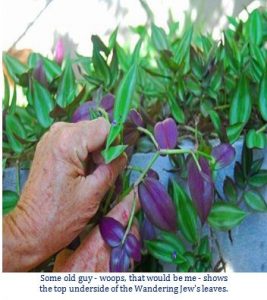 “But wait, before going further, why this name?” Well, “Wandering” is what no little part of Jewish history has been all about. Remember Moses and that long desert trek? Hence, this plant like the Jewish people has a great ability to adapt to varied environments and conditions!
“But wait, before going further, why this name?” Well, “Wandering” is what no little part of Jewish history has been all about. Remember Moses and that long desert trek? Hence, this plant like the Jewish people has a great ability to adapt to varied environments and conditions!
There are several cultivars of the Tradescantia zebrina including one of my favorites, ‘Perpusii’ which has wine colored leaves. Another cultivar, ‘Quadricolor’, has green, white, and pink stripes on the upper sides of its leaves and may be a hybrid between T. zebrina and T. fluminensis.
Virtually all look great, alone or planted with its equally easy to grow and maintain kin, the Oyster Plant, T.a spathacea (also called Moses in the Boat) and Purple Heart, T. pallida.
The ovate-oblong, fleshy leaves of the Wandering Jew are a dark green with two silvery-white stripes on top and a rather dramatic purple coloration underneath. They are ¾” to three inches (two to seven centimeters) long. Its small, pink three-parted flowers like the T. spathacea are enclosed in boat-shaped bracts that are 3/8 inch to 1 5/8 inch long. These flowers are a delightful, year around occurrence but prefer to show themselves only in the cool of the morning.
Spreading rapidly by rooting stems, the Wandering Jew requires sun to best develop its colors though too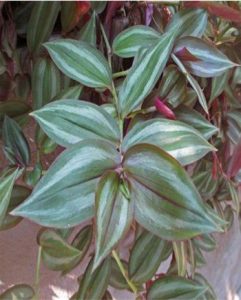 much of old Sol can cause the leaves to become a bit faded. Moist, well draining soil is definitely its preferred growing medium. It can be as much as a foot (30 ½ cm) thick or, as one writer described it, a “succulentstemmed plant that creeps and sprawls and trails all over itself to make a dense groundcover”.
much of old Sol can cause the leaves to become a bit faded. Moist, well draining soil is definitely its preferred growing medium. It can be as much as a foot (30 ½ cm) thick or, as one writer described it, a “succulentstemmed plant that creeps and sprawls and trails all over itself to make a dense groundcover”.
Its only down side consists of weak stems that easily break off. But merely put these back in the soil and voilà, soon you will have another healthy plant!
The Wandering Jew prefers rich organic soil and will be appreciative if you mulch it need not be kosher! But even under the most ideal and attention giving conditions, potted ones tend to get leggy with age.
This is no problem when grown as a groundcover as new branches cover the bare stems. However, container plants gradually become a “mass of ugly straggling stems” with only little bunches of leaves at their tips. To make this worse, when one cuts them back, they don’t promptly produce bushy fresh growth. A peer correctly groused that, “Those bare stems take a long time for new shoots to cover their nakedness.” But, the solution ain’t that difficult! Just grow new plants from cuttings and then start anew every once in a while. . . Problem solved.
The Wandering Jew enjoys occasional light feeding which encourages its growth and general health. It is seldom afflicted by pests or diseases. However, it is susceptible to an aphid-transmitted virus that can cause stunting and malformed leaves.
How might you best propagate this plant? It rarely reproduces from seed. But cuttings readily root in soil, sand, or water as long as each piece of stem includes at least one node. After keeping them well watered for a week or so, set them into mulched soil. In a shady area, you’ll quickly have a luscious new groundcover.
This guy is also very easy to transplant. Merely plant the root ball in good soil, spread out the trailing stems and then partially cover them with organic mulch.
I have read that Wandering Jew sap can cause a skin irritation in humans and that dogs kept in yards covered with Wandering Jew have developed rashes, but have never experienced any of these problems myself.
If seeking a low maintenance, attractive, multi-use plant, the Wandering Jew is for you!
For back issues of “Roots”, gardening tips, tropical plant book reviews and videos of numerous, highly unique eco/ adventure/ nature tours, as well as memorable “Ultimate Experiences” such as Tropical Garden Brunches
Visit us at.. www.olabrisagardens.com
Download the full edition or view it online
—
Tommy Clarkson is a bit of a renaissance man. He’s lived and worked in locales as disparate as the 1.2 square mile island of Kwajalein to war-torn Iraq, from aboard he and Patty’s boat berthed out of Sea Bright, NJ to Thailand, Germany, Hawaii and Viet Nam; He’s taught classes and courses on creative writing and mass communications from the elementary grades to graduate level; He’s spoken to a wide array of meetings, conferences and assemblages on topics as varied as Buddhism, strategic marketing and tropical plants; In the latter category he and Patty’s recently book, “The Civilized Jungle” – written for the lay gardener – has been heralded as “the best tropical plant book in the last ten years”; And, according to Trip Advisor, their spectacular tropical creation – Ola Brisa Gardens – is the “Number One Tour destination in Manzanillo”.



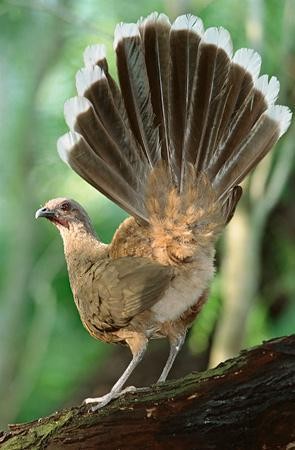
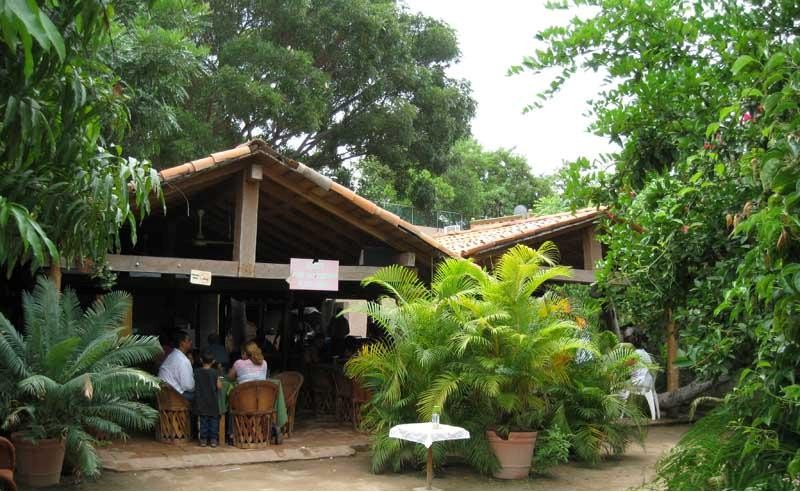
You must be logged in to post a comment.